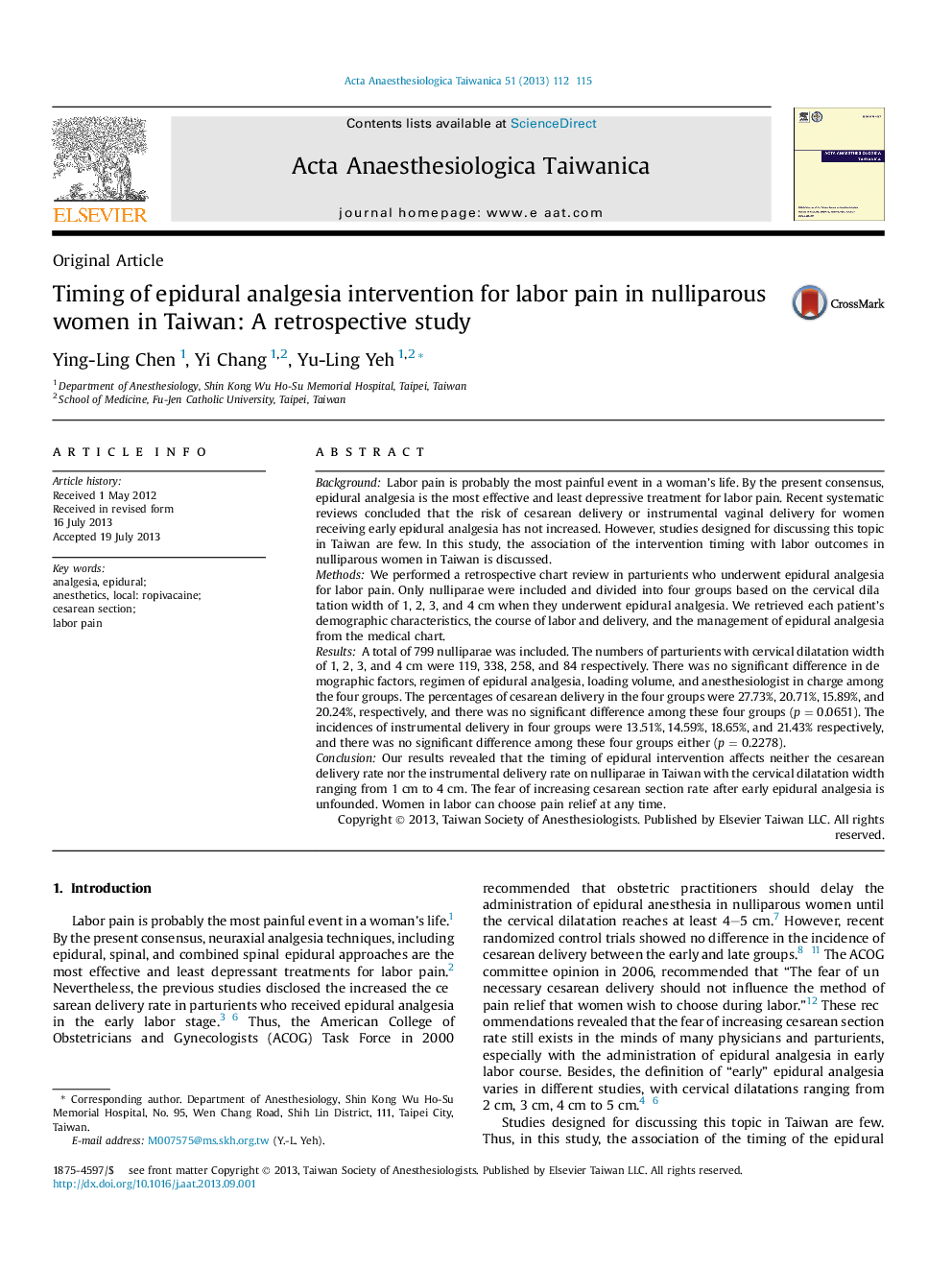| Article ID | Journal | Published Year | Pages | File Type |
|---|---|---|---|---|
| 2741475 | Acta Anaesthesiologica Taiwanica | 2013 | 4 Pages |
BackgroundLabor pain is probably the most painful event in a woman's life. By the present consensus, epidural analgesia is the most effective and least depressive treatment for labor pain. Recent systematic reviews concluded that the risk of cesarean delivery or instrumental vaginal delivery for women receiving early epidural analgesia has not increased. However, studies designed for discussing this topic in Taiwan are few. In this study, the association of the intervention timing with labor outcomes in nulliparous women in Taiwan is discussed.MethodsWe performed a retrospective chart review in parturients who underwent epidural analgesia for labor pain. Only nulliparae were included and divided into four groups based on the cervical dilatation width of 1, 2, 3, and 4 cm when they underwent epidural analgesia. We retrieved each patient's demographic characteristics, the course of labor and delivery, and the management of epidural analgesia from the medical chart.ResultsA total of 799 nulliparae was included. The numbers of parturients with cervical dilatation width of 1, 2, 3, and 4 cm were 119, 338, 258, and 84 respectively. There was no significant difference in demographic factors, regimen of epidural analgesia, loading volume, and anesthesiologist in charge among the four groups. The percentages of cesarean delivery in the four groups were 27.73%, 20.71%, 15.89%, and 20.24%, respectively, and there was no significant difference among these four groups (p = 0.0651). The incidences of instrumental delivery in four groups were 13.51%, 14.59%, 18.65%, and 21.43% respectively, and there was no significant difference among these four groups either (p = 0.2278).ConclusionOur results revealed that the timing of epidural intervention affects neither the cesarean delivery rate nor the instrumental delivery rate on nulliparae in Taiwan with the cervical dilatation width ranging from 1 cm to 4 cm. The fear of increasing cesarean section rate after early epidural analgesia is unfounded. Women in labor can choose pain relief at any time.
